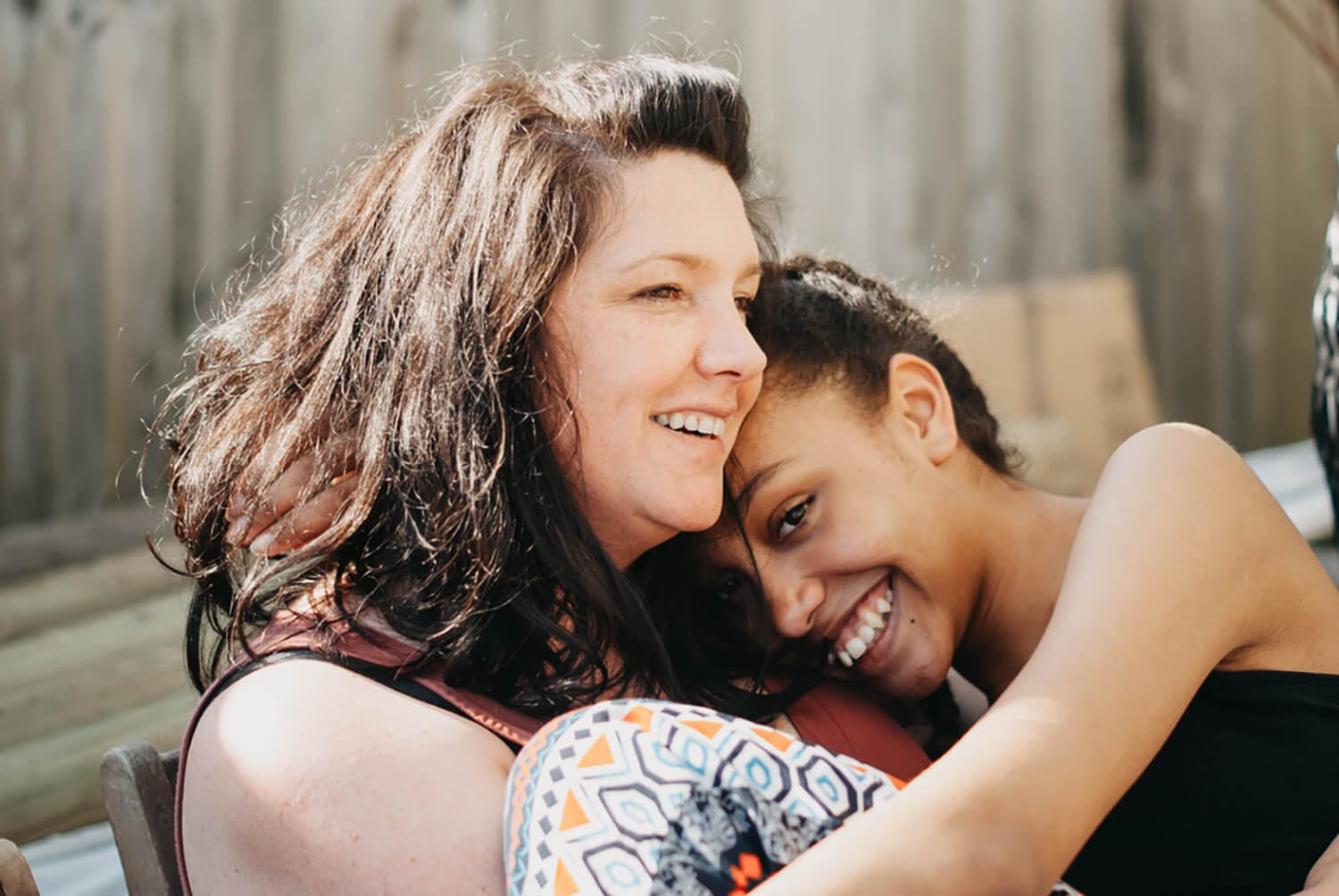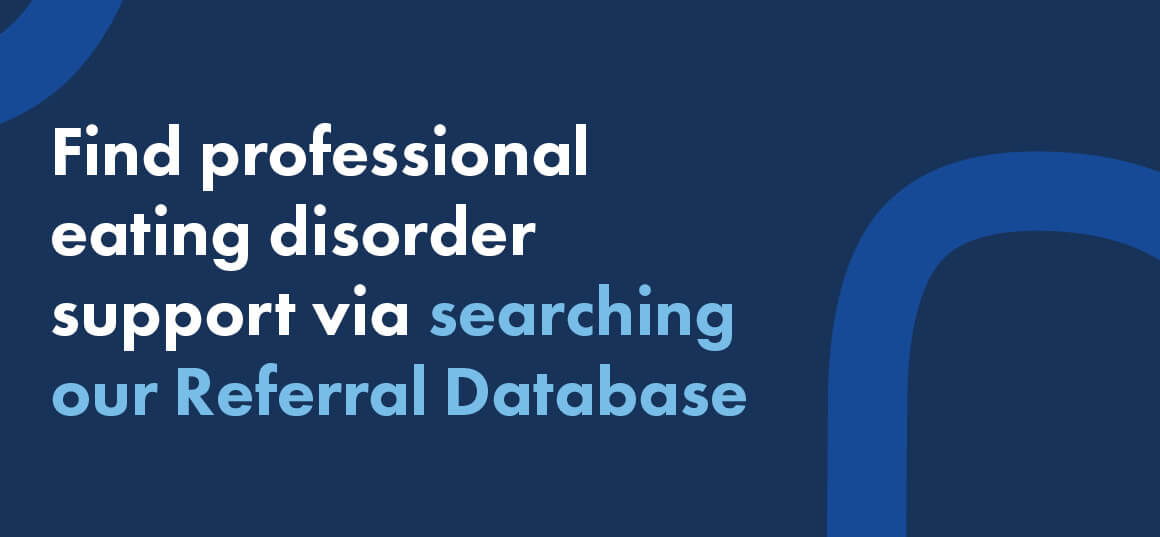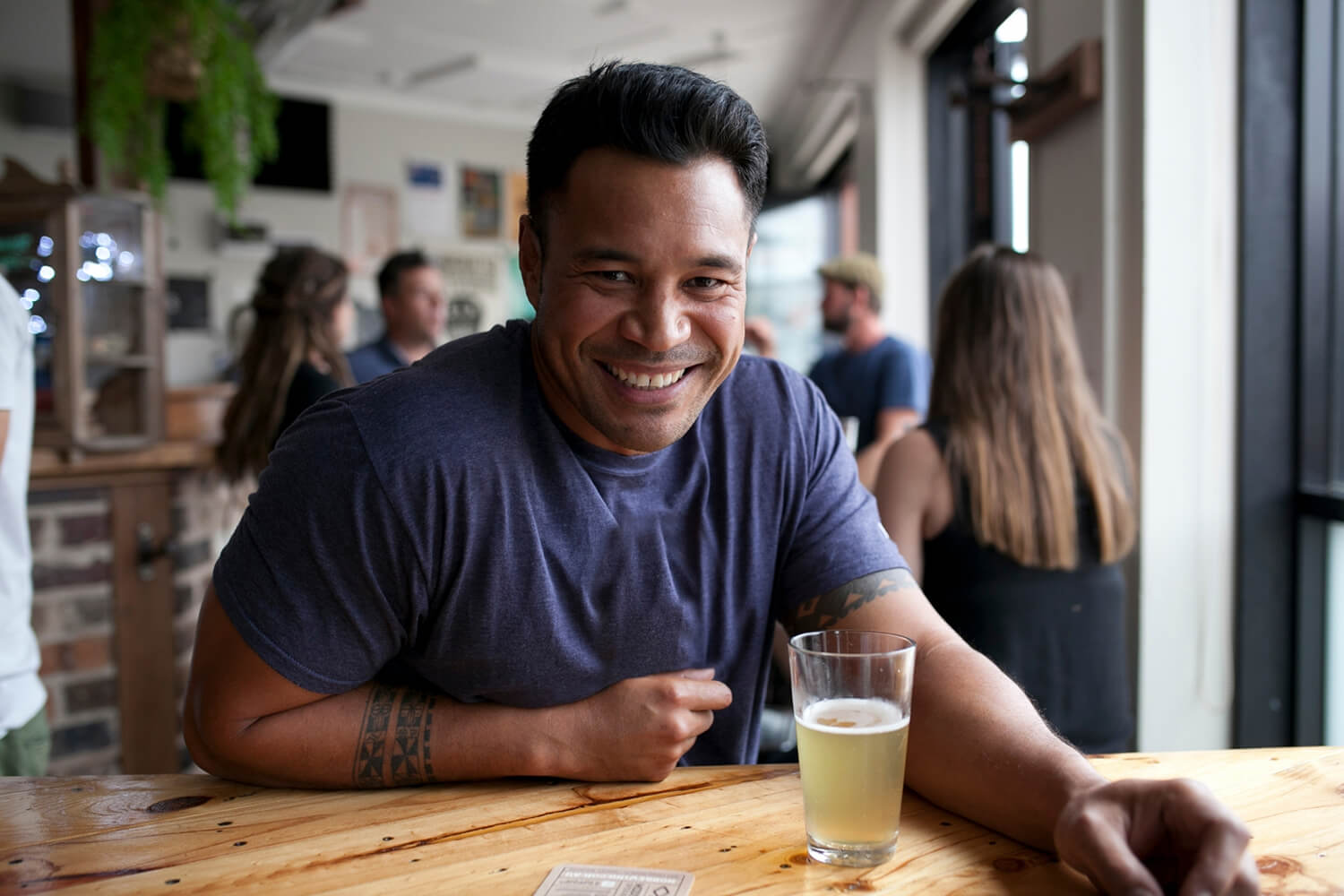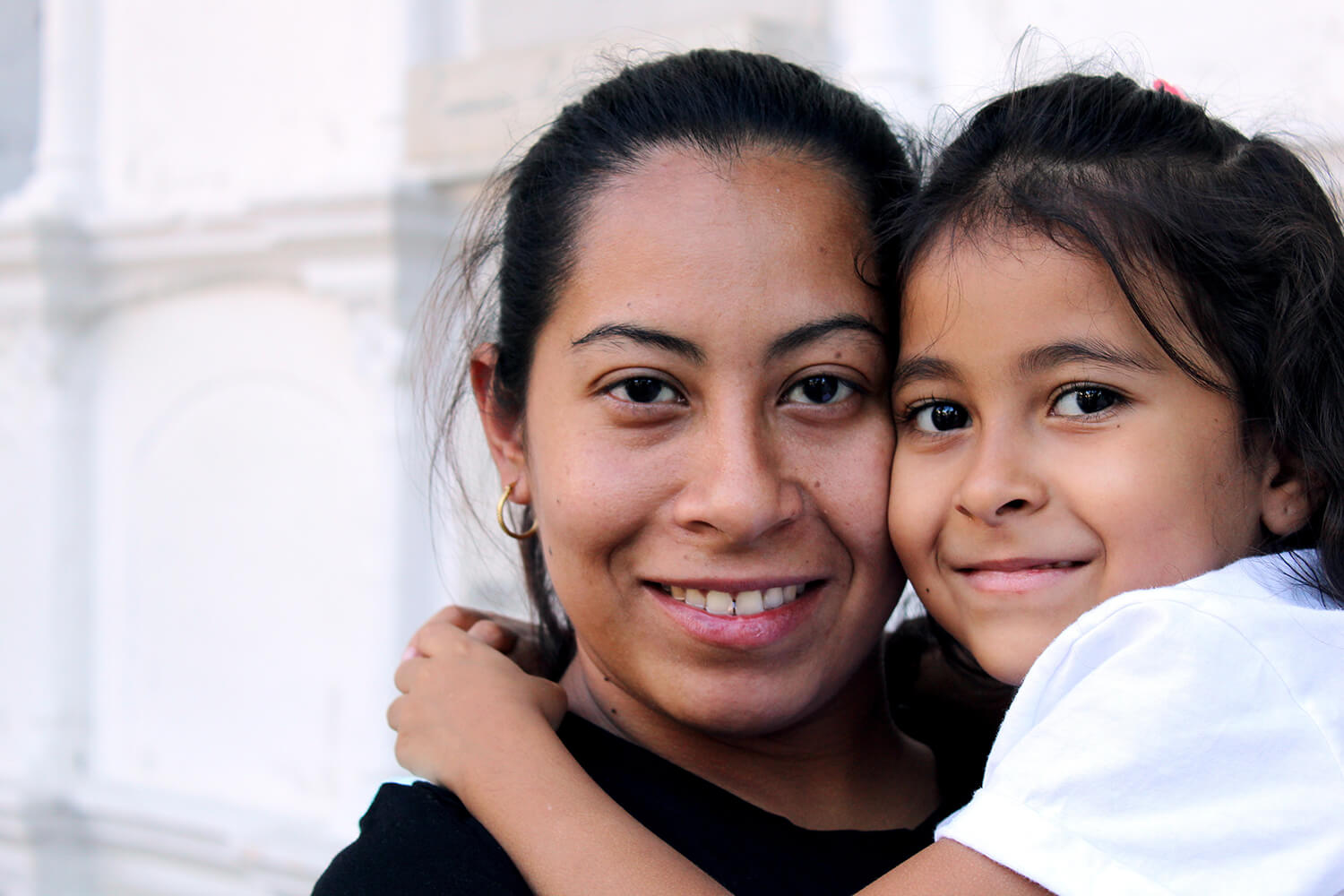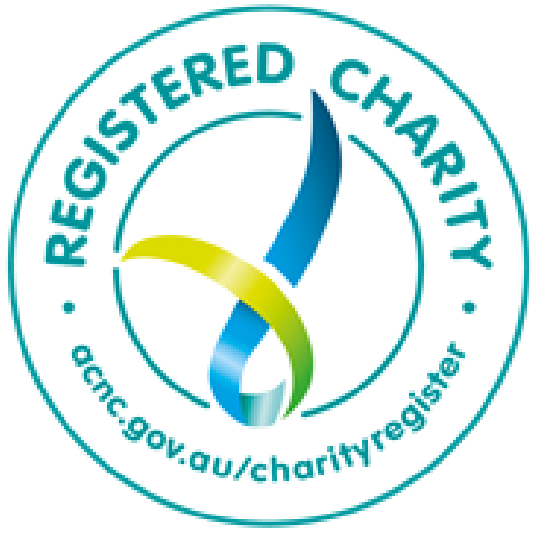In Depth with CEO, Mental Health Commission, Christine Morgan
Before she was CEO of Australia’s Mental Health Commission, Christine Morgan served for 10 years as CEO of Butterfly. And to mark Butterfly’s 20th anniversary, she sat down with Sam Ikin for an in-depth review of eating disorders in Australia. Their conversation included the state of awareness, research, diagnosis, and treatment options – first looking back to 2002 and then looking forward to 20 years from today.
“It was pretty horrific back in 2002,” she says. “Thank goodness we’ve moved on.”
Christine was instrumental in getting eating disorders on the government’s radar. She commissioned the first economic impact report in 2012 whereby she was able to establish prevalence rates and the effect of eating disorders on the economy. With this as her springboard, she successfully advocated for investment in research, prevention, evidence-based treatments, and psycho-social supports.
“When you unbundle the economic perspective, you see the impact on somebody’s life,” she explains.
But the impact report was only one of many contributions Christine has made for people living with eating disorders and those who care about them. Listen to her story and thoughts about the next 20 years for eating disorder prevention and care.
Find out more about Christine Morgan
Find out more about Paying the Price (2012)
FIND OUT MORE ABOUT INVESTING IN NEED (2014)
FIND OUT MORE ABOUT THE NATIONAL EATING DISORDERS COLLABORATION
Christine Morgan 00:08
Back in 2002, we were just not at the table when it came to mental health issues. 2022, one of the easiest mental health conversations to have at a political level, at the government level, at a department level is around eating disorders.
Sam Ikin 00:22
For this month’s, Let’s Talk In Depth we’re spending some time with the Mental Health Commissioner Christine Morgan. Before she took her current job, she spent a decade as the CEO of Butterfly. Christine played a leading role in getting eating disorders on the government’s radar. In 2012, she commissioned the first economic impact report, making the case that eating disorders were so prevalent and so serious that they were affecting Australia’s economy. That got the politicians listening, and she was able to encourage more investment in research and prevention. But that’s just the start of Christine’s long list of contributions for people living with eating disorders.
Christine Morgan 00:59
When I first started my career, far too many decades ago to say now, I was General Counsel and company secretary within large ASX listed company. So I was very much into mergers, acquisitions, corporate law. And then I had an opportunity to take quite a seismic shift and step into the space of, not social work, but more into the space of social services and community work. And I transitioned across to a large non-government organisation, Wesley Mission. And in that space, I worked across community settings, social services, settings, justice settings, as well as mental health settings. And in that space I was actively involved in running a couple of psychiatric hospitals, one of which specialised in eating disorders. So then an opportunity arose for me to move across into the eating disorder sector, first at a tiny little organisation called The New South Wales Foundation for Eating Disorders, and then within the space of about a year merging that with Butterfly Foundation, so taking a more national perspective, and I had 10 wonderful years working in a space of acute need around a neuro psychiatric condition that was not even called a mental health condition 10-15 years ago. That laid the groundwork for where I am today, which is working more broadly across mental health and suicide prevention.
Sam Ikin 02:23
It sounds like it was a kind of a noble calling for you what sort of sparked your interest in working in eating disorders and, and I guess, more broadly, mental health.
Christine Morgan 02:31
What started with eating disorders, I guess, go back to the time when I was in Wesley Mission and had the opportunity to be running a psychiatric hospital where eating disorders were a specialisation. And just being struck by the lack of understanding as to just how serious these illnesses were – the fact they were illnesses, and they just did not have a seat at the table when it came to mental health conditions. So having had, as most Australians, we now know, exposure to eating disorders and those with eating disorders over the course of my life, I thought, my goodness, this is genuinely such a misundestood illness. So I guess maybe it goes back to my legal background, but that sense of opportunity to take the advocacy foot forward to find solutions for it, to present the issues really sparked by interest, which very quickly became a passion.
Sam Ikin 03:28
Look, I know you’re aware that Butterfly’s campaign at the moment is looking at the next 20 years after being around for two decades. But could we go back in time a little bit to 20 years ago, you know, what was the state of awareness and attitudes towards eating disorders two decades ago or so?
Christine Morgan 03:45
Oh, yes. So let’s go back to 2002. And the incredible woman who set up our Butterfly Foundation, Claire Middleton, and her reality. She was a very, very well connected, compassionate mother living in Melbourne, had access to the best medical treatment, and mental health treatment available at that time. She had two daughters with eating disorders and was absolutely appalled not only at the attitude towards what we now know, is a very severe illness, but what wasn’t recognised at the time, just the lack of services. And she used to so often tell me as we sat around the kitchen table, the lengths to which people had to go and the debts they had to incur to try and access any sort of treatment for the loved ones with an eating disorder just made her absolutely passionate to say we have got to get things changed. So how was it 20 years ago? It was appalling. There was a recognition potentially, that anorexia nervosa was something pretty serious. But you know what it was more often dubbed as being an overzealous dieting by white girls who wanted to be skinny or who were trying to get attention or were pushing back against parents that was completely misunderstood as a mental illness. There was no acknowledgment or awareness of the bingeing components of eating disorders which are so critical, there was no awareness of the life-threatening nature of eating disorders, You couldn’t access treatment, let alone an integrated form of treatment that helped for recovery. And the levels of stigma around it were massive. So it was seen as a badge of shame by far too many people and their families. So it was pretty horrific back then. Thank goodness we’ve moved on.
Sam Ikin 05:29
Well, the stigma thing is something that people still have a lot of trouble trying to shake, even today with our increased awareness of it. But that was 20 years ago, I think we have managed to get rid of some of the myths. But what were some of the myths or misconceptions, and I think you’ve mentioned a couple, but some of the main things that people really got wrong about eating disorders way back then.
Christine Morgan 05:51
I think one of the worst ones, absolutely worst ones was that it was a lifestyle choice. So, there was an element of choice in there. And the young girl, maybe it was often thought she wanted attention, or she was pushing back against her parents, would just get involved in dieting and wanted to be skinny. It was about appearance and all those kinds of things. So I think it was seen as being a lifestyle choice. Now, the problem with that, of course, is that that is not a recognition of the illness component. It is anything but a choice. And anybody who’s gone through an eating disorder will tell you, this is not something anybody would choose to do. So, I think that was probably the foundational one. And it was such a barrier to being able to access treatment, because of course, if something is a choice, then just change your choices. If only it was that easy.
Sam Ikin 06:44
And when it was accepted that you did need treatment, can you take us through the state of treatment? Was anything being done to prevent or diagnose eating disorders in any sort of proactive way back then?
Christine Morgan 07:01
Look, in treatment terms, if you had to go to hospital, it was sheer hell. Absolutely sheer hell. You weren’t understood as being a patient that needed support, you were seen as being somebody who had to be force fed. And it was a battle ground around getting somebody to eat food, without any recognition of the neuro psychiatric drivers and concerns that were behind that. It was highly punitive. It was believed that you could force somebody to eat if you held back privileges from them, or if you punish them for not doing so. So it was punitive, it was combative. It was a case of theory working on the person, and no attempt whatsoever to understand what might be the driving forces in that person. No engagement really in any of the psychotherapeutic components you needed.
Sam Ikin 07:55
And so, I guess there must have come a point when people realised something’s missing here, like what’s wrong, what needs to change? And I know you mentioned Claire before – who we spoke to in the last episode – who was instrumental in bringing about this change. But was there a point, or was there a point in time that you can go back to where things started to move in the right direction?
Christine Morgan 08:19
I think it has to be said and be can never be said enough that the voices of those who actually had lived and living experience of the reality of an eating disorder, either for themselves or somebody they love to care for, has always been a driving force. I think what has happened over the last 10 to 20 years is that we have worked with eating disorders in a deliberately collaborative way. And I say collaboratively not consultative, because there’s a key difference there. We’ve worked collaboratively, which has meant we’ve done a set back to say, who are all the voices that we need at the table to understand the issues and develop a common agenda to take the needs of all of this forward. When you look at it from that perspective, you start to bring into the picture our clinicians and clinicians working across the fields of psychiatry, dietetics, GPs and the like. And of course, as psychologists and therapists, you also bring in our researchers. A very key shift in the research has been away from whether or not treatment is effective to what are the causal factors. That took us into the areas of epigenetics into neurosciences. Really incredibly important places. Then you also need to bring into the space those who provide services. So that takes you into the health and the mental health sectors, most importantly, also need to keep their people who can have lived and living experience. And we also recognised the importance of bringing in people who can shift policy, who can understand government who can start to deliberately advocate for using the levers of government. And some incredible philanthropists. I have to say here that for a horribly underfunded area of treatment need, none of it could have been done without the philanthropic support of those who have been truly committed as well. So I think the shift began, when we began to realise we need to bring them together, I take my hat off to Claire at this one, she was always the most collaborative person to work with. So Butterfly was able to convince the government back in, gosh, it would have been around 2008, 2009, that we needed to be funded to bring this kind of group of people together. And that was the very beginning of the National Eating Disorders Collaboration, which still exists today. And we called that place a place of Switzerland, a place where we were not pushing any one’s particular interest, but using the principles of collaboration, which are intrinsically, I need to understand your successes and promote them. And we do it on a win-win basis. And that I think, really shifted it forward.
Sam Ikin 11:11
The NEDC is a really good friend of the podcasts, we’ve had a handful of NEDC officials on the show. Now when you’re talking about relying on philanthropy, we’ve seen the government pitching to the tune of more than $24 million very recently. And there’s no doubt that’s a great contribution. But when you think that there’s about a million Australians affected by eating disorders, at any one time, isn’t being given the attention it needs just yet.
Christine Morgan 11:35
I think were we’ve got to with eating disorders, and along the journey, there was some pretty foundational building blocks that we needed to do. So back in 2012, Butterfly commissioned the first socio economic impact report. Why was that important? Because it became a vehicle by which we could say to government, this is the prevalence figure for eating disorders in Australia. To point to prevalence, how many Australians today will have an eating disorder? At that stage back in 2012, it was a million, I would say to you that it’s well over a million now, because one of the impacts of COVID that is something we’re really intrigued by, is why there was a significant increase not only here in Australia, but internationally, in the presentations of quite complex eating disorders. So, it’s more than a million. It was also a lifetime prevalence figure. And most importantly, through doing it through an economic lens, we were able to say to the government that this has got a really serious impact from an economic perspective. And when you unbundle the economic perspective, you see impact on somebody’s life. So that enabled us to start a conversation with the government, which was a lot more focused. This really is in our front yards, not our back yards. We have too many Australians being impacted by it. So, we began to see a shift at that particular point in time.
Sam Ikin 13:03
Just to clarify the report Christine’s talking about here is called Paying the Price: The Eeconomic and Social Impact of Eeating Disorders in Australia. It was released back in 2012. And if you’re particularly interested in having a look, all 136 pages are on the Butterfly website. And there’s a link in the show notes.
Christine Morgan 13:21
Then we’re able to through NEDC and the work of Butterfly to be able to explain to the government, a single pronged approach is not going to work here. We need investment, not only in improved treatment options, but we need to invest in research, we need to invest in treatment options, we need to invest across the various stages, so we’ve got an integrated approach. And we need to ensure that we’re supporting families as well. So when you look at the investment that’s been made, we can tick those boxes now. We can say that we are getting some really good research funding. And we are getting significant improvements when it comes to treatment options, including in community and in residential. The MBS (Medicare Item Numbers) for eating disorders recognised in 2019. In 2019, we were able to secure from the government and it’s an ongoing commitment, a specific protocol or regime, whereby somebody who is diagnosed with a complex eating disorder has access to a significantly enhanced number of therapeutic sessions, sessions with dieticians and sessions with GPs.
Sam Ikin 14:56
The situation now is that if you’ve been diagnosed with an eating disorder you may be eligible for up to 20 Medicare, subsidised sessions with a dietitian and 40 sessions with a mental health clinician over a 12 month period. That’s a huge improvement to what was available before.
Christine Morgan 15:11
We actually have embedded into the system, evidence based modalities of treatment, which are now funded through our Medicare system or universal funding system. So yes, we continue to get top up investment to support our residentials. Yes, we get ongoing investment in community-based solutions, but it’s those system changes, which are the ones that really drive forward, how we can ensure that any Australian with an eating disorder can access the care they need.
Sam Ikin 15:42
And I guess the understanding is something that’s going to take time, it doesn’t matter how much how many different programmes and things we push out there targeting the frontline workers to understand. For example, I went to get my care plan about a month ago, and the first thing they said was jump on the scales. Things like that we know are not helpful, and I spoke to the GP afterwards. I know that from you know, talking to so many people with lived experience, getting somebody to jump on the scales is the first thing they do is possibly the worst thing you could do. How, how do we go about sort of moving those kinds of behaviours?
Christine Morgan 16:20
So it’s a very good, good question. It’s a strong question because there are different levels of awareness. And the first thing I will say about awareness levels is that I fell into the trap that I suspect others do as well, which was you raise a level of awareness about something that will change somebody’s attitude or opinion or behaviour. Wrong. It doesn’t necessarily happen. It’s much more complex than that. So, I tend to look at awareness these days in different groupings. Firstly, and I’ll come back to that one about how do we encourage our health and our mental health professionals to have a deeper understanding, but the first level of awareness is within government. And I said back in 2002, we were just not at the table when it came to mental health issues. 2022 the one of the easiest mental health conversations to have at a political level or the government level or at a department level is around eating disorders. So, I think we can as a sector say that we have definitely shifted that dial, and that eating disorders have been recognised. Why, because we did do that building block approach. And most importantly, we brought our researchers, our clinicians and our lived experience together to tell a very cohesive story, and one where it became impossible to ignore it. So that has worked.
Sam Ikin 17:40
So what should our approach be to helping healthcare workers and the community become more aware, and therefore, I guess more well equipped to really help people?
Christine Morgan 17:51
Again, I think it is a building block by building block by building block approach, I think we have probably moved to a point where health and mental health professionals recognise that eating disorders are neuro psychiatric disorders. So, I think we are there in that space. But understanding the nuances, understanding the presentations, understanding the causal factors, what is driving that person’s way of thinking, and those things which will be useful or not useful, is still a work in progress. And one of the particular things about an eating disorder, which I don’t think we can change, is that the descriptor. The descriptor is, I think, so clunky. To call something an eating disorder, is to focus in on the behaviours that result from the illness as distinct from the illness itself. So when we call something an eating disorder, we’re focusing in on behaviours that are disordered because the person is not well, that’s not a really helpful way to talk about it. It instils in those who don’t have a nuanced, sophisticated understanding of eating disorders that it’s about food, it’s about weight, it’s about shape, when nothing could be further from the truth. That is the manifestation of the illness, not the illness, per se.
Sam Ikin 19:14
That’s something that I haven’t thought about it in terms of being described as an eating disorder. Is that in itself, something that’s helpful or not? Do you think there needs to be changes to fix the fundamental things like the DSM in that kind of a way?
Christine Morgan 19:28
What are the challenges we have? I’ll answer that question in a broader sense around mental health. When you look at a physical disease, such as cancer, you have very definitive quantitative ways that you can diagnose when somebody has an illness, and we talked about it in terms of illness. And you can be very measured about treatment options. Usually it’s around drugs. So you’re working in that kind of space or it’s around modalities. such as chemotherapy, etc. And you can measure whether you’re successful or not. When you come into the space of mental health, it’s not something you can see or do an x-ray about. To define a mental health issue or mental illness is to very much talk about how people are thinking, how people are feeling, how people are behaving. There’s much more of an interpretive component to it, there’s much more of a subjective component, there’s much more of a descriptive component about it, which means of necessity, you do have to look at symptomology, you can look at behaviours. And it’s one of the challenges within a, a kind of a diagnostic regime, such as DSM, such as DSM five or six, which is you have to look too often at frequency of behaviours, not anything else. So it’s an innate challenge, which, if you look at it, when it comes to an eating disorder, one of the challenges over the decades we’ve coped with is, how do you know when somebody has anorexia nervosa? If you define it by a certain body weight, or by certain behavioural patterns, you run the risk of saying, “Oh, you’re not really sick enough to be categorised as having that particular eating disorder”, whereas if you look at the symptomology, when you look at the behavioural trajectory, is saying, “You know what, I think we’ve got something really serious to worry about”. So I think there’s an inbuilt challenge when it comes to how you actually identify whether somebody has a mental illness that is embedded in eating disorders. And that is a very real issue that we need to try and adopt. One of the things that helps on that is to continue our research into the epigenetics. What are the genetic markers that will show us that somebody is at risk? What is the interplay with the environment, including utero, which impacts on it? What happens when those biomarkers are triggered? What changes in our brain? What are the neural pathway changes? All of those things take us more into that quantitative science area that’s useful.
Sam Ikin 22:09
Well, I think you’re starting to get towards where I’m going next, which is looking into your crystal ball, looking into the future, is there anything that excites you about the treatment of eating disorders?
Christine Morgan 22:20
Absolutely. And I think that what excites me about it is realising that the more nuanced and sophisticated we can become around understanding what are those biomarkers on our DNA chains? What is the intersect with the environment? Why and I put this question out there. Why is it that over the course of the last two and a half, three years when internationally and nationally, we have grappled with COVID, we haven’t really seen a marked increase in schizophrenia in psychosis in bipolar, but sure as heck, we have seen a significant increase in eating disorder presentations, and ones requiring hospitalisation? And most disturbingly, the sharpest trend of increase is in prepubescent children. What is happening? We’ve got to ask ourselves those questions. These are not lifestyle choices. So what is actually happening? That excites me, because if we can actually nail those questions, then the underpinning premise of mental health treatment, which is intervene or intervene early in illness, an earlier episode will really be able to put in sharp focus. And we know with an eating disorder, that the ongoing nature of the deep entrenchment of the neural pathway changes that hardwire the brain lead to that horrific impact over so much of somebody’s life. If we can get these things early, then we may not be able to prevent eating disorders, that’s always an aspiration. But we can sure as anything, make sure that the impact on somebody is minimised.
Sam Ikin 24:00
And I guess we could then go down a rabbit hole of looking into whether technology something they’ll be able to help us but I think that’s a question for another day. What are your hopes like? What in a perfect world? Where are we going to be in 20 years with treating people with eating disorders?
Christine Morgan 24:16
Where we’re going to be in 20 years? And by the way, can I say I think that whole space of online health is a really important one. I mean, it’s here to stay. Telehealth is a reality that’s emerged out of COVID-19 for mental health. It is there. How we do it safely is important. We need to balance the potential of our online health services with how we do it responsibly and safely. It’s a big issue. So always open for discussion on that one. Where would I like to be in 20 years? I’d like to think that it’s business as usual for GPs and others to be alert to the signs, the early signs, of those who are at risk of developing eating disorders, because I don’t think we’re ever going to eliminate the risks until we can to actually go in and hope we never do this, manipulate our DNA chains, we’re not going to eliminate it from that perspective. [Sam laughs] We can certainly assume that all GPs, just have it on their checklist, what are those things we need to look at that when we identify those own risk behaviours, that we have a basket of modalities of choice, so that we effectively work with the individual with the person to engage them, not only in how to manage that presentation at an early stage, but how to more broadly be aware of their own risks, and to embed strategies that will help them do it. And then for those who do develop severe and longer lasting eating disorders, that we have a fully integrated continuum of care for them, where we look right across the spectrum of residential community based settings, family based settings, where we keep hospitalisations, to a minimum, and where we have opportunities to work, as I say, most importantly, with the person so we can unlock their healthy behaviours, their own innate strengths, to help them overcome the immediacy of the presentation of eating disorder, and to act as a protective factor for them through their lives as well.
Sam Ikin 26:17
Wow, awesome. I guess, look, that is something that we that we definitely aspire to. Now, I know you’ve got to run. Before we do, is there anything else you wanted to say? Is there anything I’ve missed? Or is there anything else you think is relevant for our audience to know.
Christine Morgan 26:31
I think what I would like to say is, firstly, a shout out to everybody with lived living experience. Your courage, your strength, and your clarity in being able to explain what is happening and what works for you has been foundational. I’d like to shout out to all of the clinicians across the health, the mental health and associated other professions who work in this space, including those in schools and elsewhere, because I think those whole issues around body image have big issues that we need to address as well. A shout out to our researchers. Without you, we would not have made these really foundational fundamental shifts. And a real happy birthday to Butterfly. You been doing absolutely incredible work. My hat off to Claire and everybody on the board and those who have worked with it over the years, the work you’re doing, and to those people who support you, including those who give at above and beyond in financial and other ways to support this work. So I guess my call out is to say, an enormous acknowledgement of thank you to each and every different voice that is contributed to making a seismic difference for how eating disorders are recognised, understood, better understood, and addressed in Australia. A big thank you.
Sam Ikin 27:53
What a lovely way to end. Thank you so much. Christine Morgan, Mental Health Commissioner, thanks for your time.
Christine Morgan 27:59
Thank you.
Sam Ikin 28:00
If you need support with an eating disorder or negative body image, the Butterfly Helpline is there seven days a week from 8am until midnight. The number to call is 1800 334673. Or you can go online to butterfly.org.au. And of course, if you prefer you can chat online. Butterfly.org.au is the website. For more on Butterfly’s 20 year milestone, check out the Next 20 campaign. You’ll find that under campaigns again on butterfly.org.au. And there’s a link also for that in the show notes. If you like what we’re doing here; the Butterfly podcast: Let’s Talk and the Butterfly In Depth bonus episodes, if you could please leave us a rating or a comment on either Apple Podcasts or on Spotify, we’d really appreciate that. That would really help us out a lot. And as always, if you know somebody who you think could benefit from hearing these kinds of conversations, please tell them. This show is an Ikin Media production for Butterfly. I’m Sam Ikin. For more on me you can go to ikinmedia.au. That’s I K I N. For more and Christine Morgan or the National Mental Health Commission, go to mentalhealth.gov.au. And until next time, thank you so much for your company.





